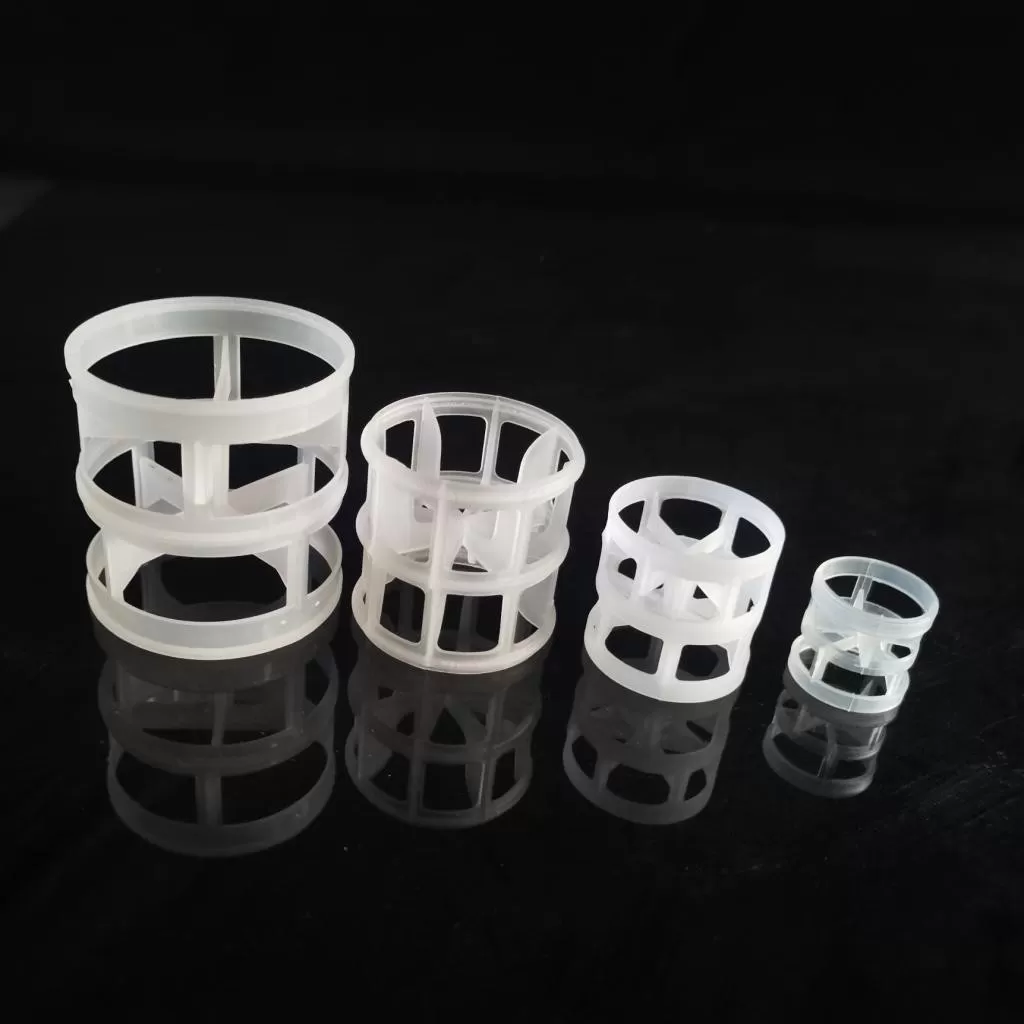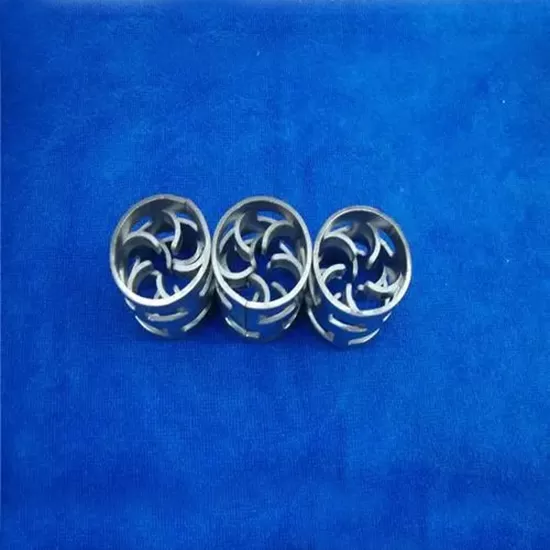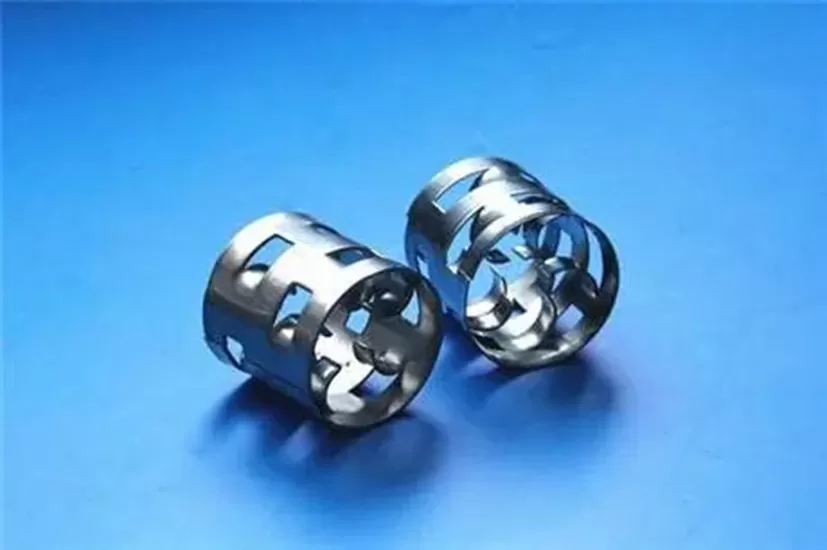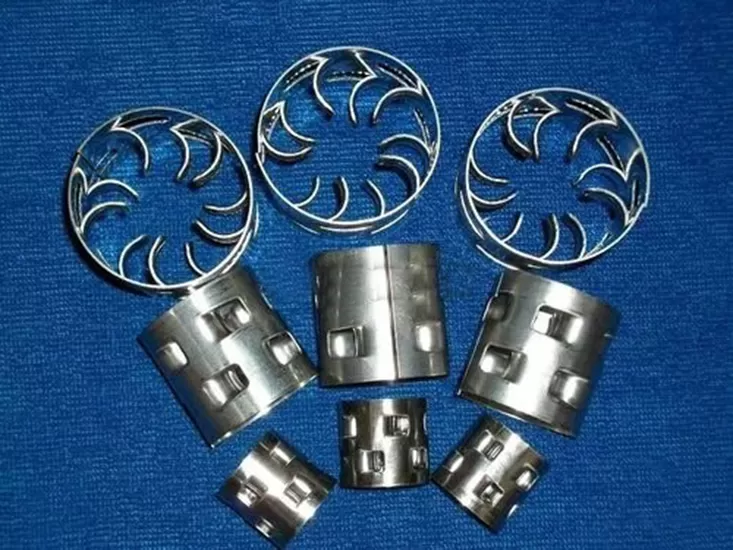The working principle of Pall rings
As a kind of high-performance random packing, Pall rings play a significant role in mass and heat transfer processes in various fields such as chemical engineering and environmental protection. Their working principle mainly lies in the optimization of gas-liquid flow and contact through a unique structural design, thereby achieving efficient mass and heat transfer processes.

From the perspective of structural design, Pall rings are an improvement over Raschig rings. They have two layers of rectangular window holes on the wall surface, each with five tongue-like projections that bend inward towards the center of the ring. This perforated structure breaks the closed structure of Raschig rings. On the one hand, the perforations allow gas and liquid to enter the inner space of the ring through the window holes on the wall, significantly increasing the contact area between the gas and liquid phases and the packing. On the other hand, the gas and liquid inside the ring can permeate and mix with each other, reducing the channeling and wall flow of the liquid, and making the gas-liquid distribution more uniform.

During the mass transfer process, the gas and liquid phases come into countercurrent contact within the Pall ring packing layer. When liquid is sprayed onto the Pall rings, a liquid film forms on the surface of the packing. Gas rises through the voids of the packing and comes into full contact with the liquid film. Due to the perforated structure of the Pall rings, the gas-liquid contact area increases, and the solute molecules in the gas phase can more easily diffuse into the liquid film, achieving mass transfer between the gas and liquid. For example, in the absorption process, when a mixed gas containing harmful gases passes through an absorption tower filled with Pall rings, the absorbent forms a liquid film on the surface of the Pall rings. The harmful gas molecules diffuse from the gas phase to the gas-liquid interface and then pass through the liquid film into the liquid phase, thereby purifying the gas.

In the heat transfer process, Pall rings also play an important role. When hot and cold fluids flow in opposite directions through the Pall ring packing layer, heat is transferred through the solid surface of the Pall rings and the gas-liquid interface. Due to the large and uniform gas-liquid contact area, the hot fluid can quickly transfer heat to the cold fluid, achieving efficient heat exchange. For instance, in a distillation column, the rising vapor and descending liquid exchange heat on the surface of the Pall rings. Some of the vapor condenses, and some of the liquid vaporizes, thereby achieving the separation and purification of the mixture.

In addition, Pall rings have a high voidage, which reduces the resistance of gas and liquid flowing through the packing layer. The lower resistance means that under the same operating conditions, the energy consumption of the equipment can be reduced, and the processing capacity and operational stability of the equipment can be improved. At the same time, the way they are stacked gives the packing layer a certain void structure, which can accommodate more gas and liquid fluids, ensuring sufficient contact time between the gas and liquid phases within the packing layer and further promoting the mass and heat transfer processes.

